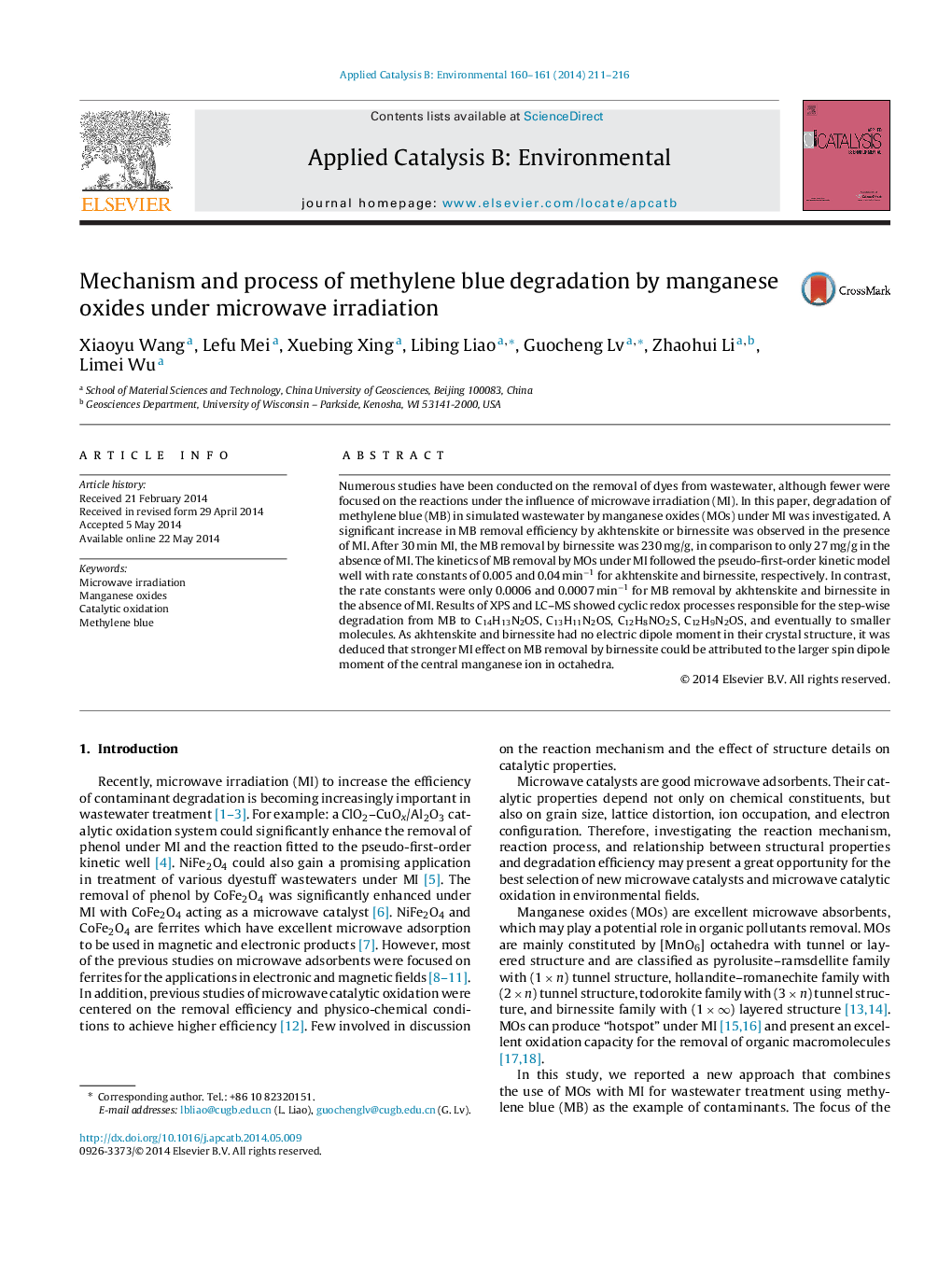| Article ID | Journal | Published Year | Pages | File Type |
|---|---|---|---|---|
| 6500909 | Applied Catalysis B: Environmental | 2014 | 6 Pages |
Abstract
Numerous studies have been conducted on the removal of dyes from wastewater, although fewer were focused on the reactions under the influence of microwave irradiation (MI). In this paper, degradation of methylene blue (MB) in simulated wastewater by manganese oxides (MOs) under MI was investigated. A significant increase in MB removal efficiency by akhtenskite or birnessite was observed in the presence of MI. After 30Â min MI, the MB removal by birnessite was 230Â mg/g, in comparison to only 27Â mg/g in the absence of MI. The kinetics of MB removal by MOs under MI followed the pseudo-first-order kinetic model well with rate constants of 0.005 and 0.04Â minâ1 for akhtenskite and birnessite, respectively. In contrast, the rate constants were only 0.0006 and 0.0007Â minâ1 for MB removal by akhtenskite and birnessite in the absence of MI. Results of XPS and LC-MS showed cyclic redox processes responsible for the step-wise degradation from MB to C14H13N2OS, C13H11N2OS, C12H8NO2S, C12H9N2OS, and eventually to smaller molecules. As akhtenskite and birnessite had no electric dipole moment in their crystal structure, it was deduced that stronger MI effect on MB removal by birnessite could be attributed to the larger spin dipole moment of the central manganese ion in octahedra.
Related Topics
Physical Sciences and Engineering
Chemical Engineering
Catalysis
Authors
Xiaoyu Wang, Lefu Mei, Xuebing Xing, Libing Liao, Guocheng Lv, Zhaohui Li, Limei Wu,
